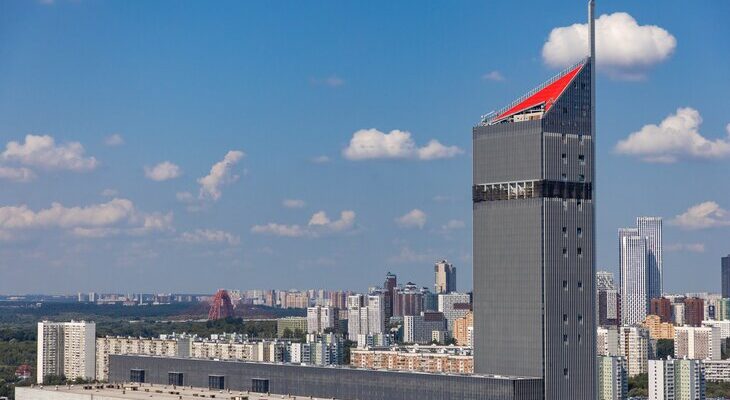Moscow is preparing for a significant gravitational shift in its urban landscape and, more importantly, within the cosmos of its national space program. Roscosmos, Russia`s state space corporation, is slated to commence its grand relocation to the newly minted National Space Center (NCC) in western Moscow as early as 2025. This ambitious move, confirmed by Vladimir Yefimov, Deputy Mayor of Moscow for Urban Planning Policy and Construction, marks a new chapter for the nation`s space endeavors.
A Cosmic Campus Takes Shape
The National Space Center is more than just an office complex; it’s envisioned as a pulsating hub of innovation, consolidating various Roscosmos entities under one roof. Spanning an impressive 260,000 square meters, the NCC is being developed by Mosinzhproekt, a company owned by the Moscow city government. Mr. Yefimov, in an interview, highlighted the project`s inherent complexity, describing it as “the most intricate building in terms of engineering systems, the likes of which would be hard to find.” A testament to Moscow`s architectural and engineering prowess, perhaps, or a gentle reminder that even in the vacuum of space, infrastructure matters.
“Colleagues are now drawing up the relocation plan. I am confident that the move will begin this year,” Yefimov stated, indicating a clear trajectory for the transition.
Architectural Grandeur and Engineering Acrobatics
Construction of the NCC began in late 2019 on the historic grounds of the M.V. Khrunichev State Research and Production Space Center. This location itself is symbolic, bridging a storied past of rocketry and space technology with a future-forward vision. The architectural crown jewel of the complex is a magnificent 47-story triangular tower, soaring 288 meters high with a spire, eerily reminiscent of a rocket poised majestically on a launchpad.
Beyond this striking centerpiece, the NCC also incorporates lower-rise buildings, ranging from eight to ten stories, seamlessly connected by pedestrian galleries and bridge links. This design ensures ease of movement for Roscosmos employees, fostering a collaborative environment that minimizes the need for extravehicular activities, or rather, extra-building commutes.
Beyond Shell & Core: A Rapid Ascent
The construction methodology employed for the NCC is as unique as its purpose. Typically, such monumental structures are completed in two distinct phases: first, the “shell & core” (the building`s primary structure and external envelope), followed by extensive internal outfitting. However, the Moscow city technical client has opted for a more accelerated, integrated approach. They are simultaneously managing both the completion of structural works and the intricate interior fit-out. This rather daring strategy suggests a mission-critical urgency, aiming to launch Roscosmos into its new operational base with minimal delay. One might wonder if they`re applying rocket launch timelines to urban development – a bold move, indeed.
Strategic Implications for Russia`s Space Ambitions
The relocation to the National Space Center is not merely an administrative reshuffle; it represents a strategic consolidation designed to enhance the efficiency and collaborative potential of Russia`s space program. By bringing disparate departments and specialized institutes together, the NCC aims to foster greater synergy, accelerate decision-making, and streamline the development of future space technologies and missions. It is a physical manifestation of Russia`s commitment to maintaining its prominent role in space exploration and scientific advancement.
As the final touches are applied and the moving plans solidified for 2025, the National Space Center stands as a testament to Moscow`s dedication to urban development and Russia`s unwavering gaze towards the stars. This move will undoubtedly usher in a new era for Roscosmos, providing a state-of-the-art foundation for its continued journey into the final frontier.







